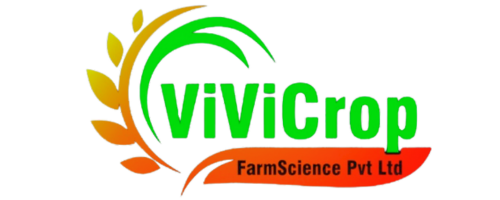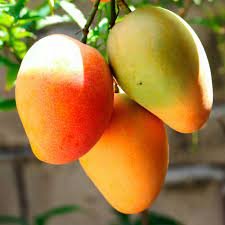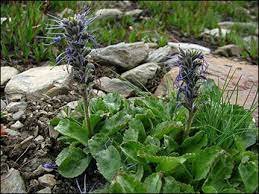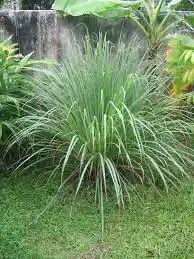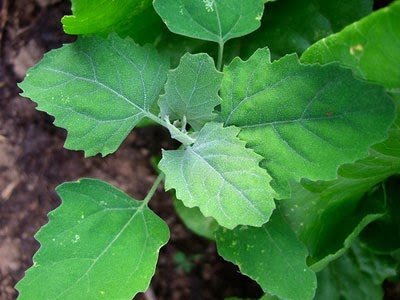Carnation Nutrition Requirements
Nutrition required by Carnation at each stage of its life cycle.
SOIL PREPARATION
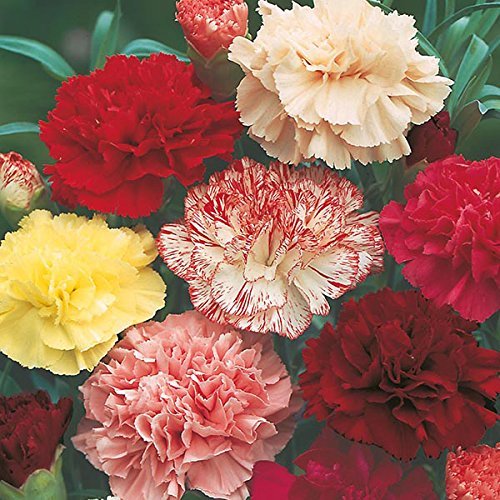
Soil Preparation
Carnations, also known as clove pinks, are popular flowering plants known for their colorful and fragrant blooms. Proper soil preparation and providing the necessary nutrients are essential for their healthy growth and development.
Here's a guide on soil preparation methods and nutrition requirements for carnations at the soil preparation stage:
**Soil Preparation Method:**
1. **Site Selection:** Choose a well-draining location with plenty of sunlight exposure for planting carnations. Avoid areas with heavy clay soil or poor drainage to prevent waterlogging, which can lead to root rot.
2. **Soil Testing:** Conduct a soil test to assess the pH and nutrient levels of the soil. Carnations prefer slightly acidic to neutral soil with a pH range of 6.0 to 7.0. Soil testing helps determine if any amendments are needed to optimize soil conditions for plant growth.
3. **Soil Amendment:** Based on the soil test results, amend the soil as necessary to improve its structure and fertility. Incorporate organic matter such as compost, well-rotted manure, or peat moss into the soil to improve drainage, aeration, and nutrient retention.
4. **Tilling and Loosening:** Use a garden tiller or shovel to loosen the soil to a depth of about 8 to 10 inches. Break up any clumps and remove rocks, debris, and weeds from the planting area to create a smooth and friable seedbed for planting.
5. **Mulching:** Apply a layer of organic mulch, such as wood chips or shredded leaves, to the soil surface after planting carnations. Mulching helps conserve soil moisture, suppress weed growth, and regulate soil temperature, creating an optimal environment for plant growth.
**Nutrition Requirement:**
Carnations have specific nutritional requirements to support their growth and blooming.
Here are the key nutrients needed for carnations:
1. **Nitrogen (N):** Nitrogen is essential for promoting healthy vegetative growth and lush foliage in carnations. Incorporate a balanced fertilizer with a higher nitrogen content into the soil before planting to provide a steady supply of nitrogen throughout the growing season.
2. **Phosphorus (P):** Phosphorus is important for promoting root development, flower initiation, and overall plant vigor in carnations. Use a fertilizer with a higher phosphorus content or incorporate phosphorus-rich amendments such as bone meal into the soil during soil preparation.
3. **Potassium (K):** Potassium plays a crucial role in flower formation, disease resistance, and overall plant health in carnations. Choose a fertilizer with a balanced ratio of nitrogen, phosphorus, and potassium (NPK) to ensure adequate potassium supply for plant growth.
4. **Calcium (Ca) and Magnesium (Mg):** Calcium and magnesium are secondary nutrients that are important for carnation growth and development. Ensure that the soil pH is within the optimal range to promote the availability of calcium and magnesium for plant uptake.
5. **Micronutrients:** Carnations also require micronutrients such as iron, manganese, zinc, and copper for various physiological functions. Incorporate micronutrient-rich amendments or use a complete fertilizer containing micronutrients to meet the plant's nutritional needs.
**Application Method:**
- **Fertilizer Application:** Before planting carnations, incorporate a balanced slow-release fertilizer or granular fertilizer into the soil based on the soil test recommendations. Follow the fertilizer application rates and guidelines provided on the product label.
- **Micronutrient Application:** If soil test results indicate micronutrient deficiencies, apply micronutrient-rich fertilizers or foliar sprays containing chelated micronutrients to correct deficiencies and ensure optimal plant nutrition.
By following these soil preparation methods and providing the necessary nutrients at the soil preparation stage, you can create an ideal growing environment for carnations and promote healthy growth and blooming. Regular monitoring of soil conditions and plant health, along with appropriate watering and maintenance practices, will further support the successful cultivation of carnations.
Early Growth (Germination to Establishment)

Early Growth
During the early growth stage (germination to establishment) of carnations, providing the right nutrients is crucial for promoting healthy seedling development, root establishment, and vigorous growth.
Here are the key nutrients required by carnations during this stage:
1. **Nitrogen (N):** Nitrogen is essential for promoting early vegetative growth, including leaf and stem development, in carnations. It plays a vital role in the synthesis of chlorophyll and other proteins necessary for plant growth.
2. **Phosphorus (P):** Phosphorus is important for promoting root development, which is critical for anchoring the plant and absorbing water and nutrients from the soil. It also plays a role in energy transfer within the plant and early growth processes.
3. **Potassium (K):** Potassium contributes to overall plant vigor and helps in the development of strong stems and roots during the early growth stage of carnations. It also aids in water uptake and nutrient transport within the plant.
4. **Calcium (Ca) and Magnesium (Mg):** Calcium and magnesium are essential for cell wall formation, cell division, and overall plant structure. They are important for ensuring strong and healthy plant growth during the early stages of development.
5. **Micronutrients:** Micronutrients such as iron (Fe), manganese (Mn), zinc (Zn), copper (Cu), boron (B), and molybdenum (Mo) are required in small amounts but are essential for various physiological processes, enzyme activities, and overall plant health.
**Application Methods:**
- **Soil Application:** Incorporate a balanced fertilizer with a higher ratio of nitrogen to phosphorus and potassium (e.g., 10-10-10 or similar) into the soil before planting carnation seeds or transplanting seedlings. Follow the recommended application rates based on soil test results and fertilizer guidelines.
- **Foliar Application:** If micronutrient deficiencies are observed or suspected, foliar applications of micronutrient-rich fertilizers or chelated micronutrients can be applied to the foliage of young carnation plants. Follow the product instructions for proper dilution and application timing.
**Precautions:**
- **Avoid Excessive Fertilization:** While providing adequate nutrients is important, avoid overfertilization, as it can lead to nutrient imbalances, salt buildup in the soil, and potential damage to young carnation plants. Follow the recommended application rates and guidelines provided on fertilizer labels.
- **Monitor Plant Health:** Regularly monitor the growth and health of young carnation plants during the early growth stage. Look for signs of nutrient deficiencies or excesses, such as yellowing or stunted growth, and adjust fertilizer applications as needed.
- **Watering Practices:** Ensure that young carnation plants receive sufficient water to support healthy growth during the early stages of development. Keep the soil consistently moist but not waterlogged to facilitate nutrient uptake and root establishment.
By meeting the nutritional requirements of carnations during the early growth stage and following proper application methods and precautions, you can promote robust seedling development and establish a strong foundation for healthy carnation plants. Regular monitoring and appropriate management practices are essential for ensuring optimal growth and development during this critical stage.
Tillering Stage (Shoot Development)

Tillering Stage
During the tillering stage (shoot development) of carnations, providing the right nutrients is crucial for promoting robust vegetative growth, strong stem development, and the formation of healthy flower buds.
Here are the key nutrients required by carnations during this stage:
1. **Nitrogen (N):** Nitrogen is essential for promoting vigorous vegetative growth, including the development of shoots, leaves, and stems, during the tillering stage of carnations. It plays a crucial role in protein synthesis, chlorophyll production, and overall plant metabolism.
2. **Phosphorus (P):** Phosphorus is important for promoting root development, which supports the uptake of water and nutrients necessary for shoot development and overall plant growth. It also plays a role in energy transfer and the formation of flower buds.
3. **Potassium (K):** Potassium contributes to overall plant vigor and helps in the development of strong stems and healthy foliage during the tillering stage of carnations. It also plays a role in water regulation, nutrient transport, and the formation of flower buds.
4. **Calcium (Ca) and Magnesium (Mg):** Calcium and magnesium are essential for cell wall formation, cell division, and overall plant structure during the tillering stage of carnations. They help in the development of strong and sturdy stems and promote overall plant health.
5. **Micronutrients:** Micronutrients such as iron (Fe), manganese (Mn), zinc (Zn), copper (Cu), boron (B), and molybdenum (Mo) are required in small amounts but are essential for various physiological processes, enzyme activities, and overall plant health during the tillering stage.
**Application Methods:**
- **Fertilizer Application:** Apply a balanced fertilizer with a higher ratio of nitrogen to phosphorus and potassium (e.g., 15-10-10 or similar) to provide essential nutrients for shoot development and overall plant growth during the tillering stage of carnations. Follow the recommended application rates based on soil test results and fertilizer guidelines.
- **Top Dressing:** Apply a layer of compost or well-decomposed organic matter around the base of carnation plants during the tillering stage to provide additional nutrients and improve soil fertility. Incorporate the organic matter into the soil surface without disturbing the plant roots.
**Precautions:**
- **Avoid Excessive Fertilization:** While providing adequate nutrients is important, avoid overfertilization, as it can lead to nutrient imbalances, salt buildup in the soil, and potential damage to carnation plants. Follow the recommended application rates and guidelines provided on fertilizer labels.
- **Monitor Plant Health:** Regularly monitor the growth and health of carnation plants during the tillering stage. Look for signs of nutrient deficiencies or excesses, such as yellowing or stunted growth, and adjust fertilizer applications as needed.
- **Watering Practices:** Ensure that carnation plants receive sufficient water to support healthy growth during the tillering stage. Keep the soil consistently moist but not waterlogged to facilitate nutrient uptake and promote strong shoot development.
By meeting the nutritional requirements of carnations during the tillering stage and following proper application methods and precautions, you can promote robust shoot development, strong stem growth, and overall plant vigor. Regular monitoring and appropriate management practices are essential for ensuring optimal growth and development during this critical stage.
Flowering

Flowering
During the flowering stage of carnations, providing the right nutrients is crucial for promoting abundant and vibrant blooms, maintaining plant health, and ensuring optimal flower quality.
Here are the key nutrients required by carnations during this stage:
1. **Potassium (K):** Potassium is essential for promoting flower development and enhancing flower color, size, and quality in carnations. It plays a crucial role in regulating water uptake, nutrient transport, and overall plant metabolism during the flowering stage.
2. **Phosphorus (P):** Phosphorus is important for promoting flower bud formation and supporting flower development and overall plant vigor during the flowering stage of carnations. It plays a role in energy transfer, cell division, and the synthesis of DNA and RNA.
3. **Calcium (Ca) and Magnesium (Mg):** Calcium and magnesium are essential for maintaining strong and healthy flower stems, petals, and overall flower structure in carnations during the flowering stage. They help in cell wall formation, cell division, and the regulation of various physiological processes.
4. **Nitrogen (N):** While nitrogen is important for promoting vegetative growth, excessive nitrogen availability during the flowering stage can lead to excessive foliage growth at the expense of flower production in carnations. It's important to provide a balanced level of nitrogen to support healthy plant growth and flower development without promoting excessive vegetative growth.
5. **Micronutrients:** Micronutrients such as iron (Fe), manganese (Mn), zinc (Zn), copper (Cu), boron (B), and molybdenum (Mo) are required in small amounts but are essential for various physiological processes, enzyme activities, and overall flower health and quality during the flowering stage of carnations.
**Application Methods:**
- **Fertilizer Application:** Apply a balanced fertilizer with a higher ratio of potassium to phosphorus and nitrogen (e.g., 5-10-10 or similar) to promote flower development and enhance flower quality during the flowering stage of carnations. Follow the recommended application rates based on soil test results and fertilizer guidelines.
- **Foliar Application:** If micronutrient deficiencies are observed or suspected, foliar applications of micronutrient-rich fertilizers or chelated micronutrients can be applied directly to the foliage of carnation plants during the flowering stage to correct deficiencies and promote healthy flower development.
**Precautions:**
- **Avoid Excessive Fertilization:** While providing adequate nutrients is important, avoid overfertilization during the flowering stage, as it can lead to nutrient imbalances and potential damage to carnation plants. Follow the recommended application rates and guidelines provided on fertilizer labels.
- **Monitor Plant Health:** Regularly monitor the growth and health of carnation plants during the flowering stage. Look for signs of nutrient deficiencies or excesses, such as yellowing or discoloration of leaves, and adjust fertilizer applications as needed.
- **Watering Practices:** Ensure that carnation plants receive sufficient water to support healthy flower development during the flowering stage. Keep the soil consistently moist but not waterlogged to facilitate nutrient uptake and promote vibrant flower blooms.
By meeting the nutritional requirements of carnations during the flowering stage and following proper application methods and precautions, you can promote abundant and vibrant flower blooms, maintain plant health, and ensure optimal flower quality. Regular monitoring and appropriate management practices are essential for ensuring successful flower production during this critical stage.
Matchuration & Ripening

Matchuration & Ripening
During the maturation and ripening stage of carnations, providing the right nutrients is crucial for promoting the development of high-quality flowers with vibrant colors, strong stems, and extended vase life.
Here are the key nutrients required by carnations during this stage:
1. **Potassium (K):** Potassium is essential for promoting flower maturation, enhancing flower color intensity, and improving flower quality and longevity in carnations during the maturation and ripening stage. It plays a crucial role in regulating water uptake, nutrient transport, and overall plant metabolism.
2. **Calcium (Ca) and Magnesium (Mg):** Calcium and magnesium are essential for maintaining strong and healthy flower stems, petals, and overall flower structure during the maturation and ripening stage of carnations. They help in cell wall formation, cell division, and the regulation of various physiological processes, contributing to improved flower quality and vase life.
3. **Phosphorus (P):** Phosphorus is important for promoting flower development and supporting flower maturation and overall plant vigor during the maturation and ripening stage of carnations. It plays a role in energy transfer, cell division, and the synthesis of DNA and RNA, contributing to the production of high-quality flowers.
4. **Nitrogen (N):** While nitrogen is important for promoting vegetative growth, excessive nitrogen availability during the maturation and ripening stage can lead to delayed flower maturation and reduced flower quality in carnations. It's important to provide a balanced level of nitrogen to support healthy plant growth and flower development without promoting excessive vegetative growth.
5. **Micronutrients:** Micronutrients such as iron (Fe), manganese (Mn), zinc (Zn), copper (Cu), boron (B), and molybdenum (Mo) are required in small amounts but are essential for various physiological processes, enzyme activities, and overall flower health and quality during the maturation and ripening stage of carnations.
**Application Methods:**
- **Fertilizer Application:** Apply a balanced fertilizer with a higher ratio of potassium to phosphorus and nitrogen (e.g., 5-10-15 or similar) to promote flower maturation, enhance flower color intensity, and improve flower quality and longevity during the maturation and ripening stage of carnations. Follow the recommended application rates based on soil test results and fertilizer guidelines.
- **Foliar Application:** If micronutrient deficiencies are observed or suspected, foliar applications of micronutrient-rich fertilizers or chelated micronutrients can be applied directly to the foliage of carnation plants during the maturation and ripening stage to correct deficiencies and promote healthy flower development.
**Precautions:**
- **Avoid Excessive Fertilization:** While providing adequate nutrients is important, avoid overfertilization during the maturation and ripening stage, as it can lead to nutrient imbalances and potential damage to carnation plants. Follow the recommended application rates and guidelines provided on fertilizer labels.
- **Monitor Plant Health:** Regularly monitor the growth and health of carnation plants during the maturation and ripening stage. Look for signs of nutrient deficiencies or excesses, such as yellowing or discoloration of leaves, and adjust fertilizer applications as needed.
- **Watering Practices:** Ensure that carnation plants receive sufficient water to support healthy flower development during the maturation and ripening stage. Keep the soil consistently moist but not waterlogged to facilitate nutrient uptake and promote vibrant flower blooms.
By meeting the nutritional requirements of carnations during the maturation and ripening stage and following proper application methods and precautions, you can promote the development of high-quality flowers with vibrant colors, strong stems, and extended vase life. Regular monitoring and appropriate management practices are essential for ensuring successful flower production during this critical stage.
Harvesting

Harvesting
During the harvesting stage of carnations, proper nutrition and care are essential to ensure the flowers are of high quality, have a longer vase life, and maintain their freshness.
Here are the key aspects of nutrition requirements and procedures to follow at the harvesting stage for carnations:
**Nutrition Requirement:**
1. **Water:** Adequate hydration is crucial for maintaining the freshness and quality of harvested carnation flowers. Ensure that carnation plants are well-watered leading up to harvest to optimize water uptake and prevent wilting.
2. **Sugar Solution:** Providing a sugar solution to harvested carnation flowers can help extend their vase life by providing them with additional energy. Prepare a solution of water and sugar (e.g., 1 tablespoon of sugar per quart of water) and immerse the cut stems of carnations in the solution immediately after harvest.
3. **Preservative Solution:** Using a commercial floral preservative solution can help prolong the vase life of carnation flowers by inhibiting bacterial growth and maintaining water balance. Follow the instructions provided with the preservative solution for proper dilution and application.
4. **Hydration Treatment:** Hydration treatment involves immersing harvested carnation flowers in water for several hours before arranging them in floral displays. This helps replenish moisture lost during harvest and transportation, ensuring the flowers remain hydrated and fresh.
**Harvesting Procedure:**
1. **Timing:** Harvest carnation flowers when they are fully mature but still in the bud stage or have just started to open. Avoid harvesting flowers that are fully open, as they may not last as long in arrangements.
2. **Tools:** Use sharp, clean floral shears or scissors to cut carnation stems at a 45-degree angle. This helps create a larger surface area for water uptake and prevents stem crushing, which can inhibit water absorption.
3. **Stem Length:** Cut carnation stems to the desired length for floral arrangements, leaving at least 2-3 nodes (leaf joints) on the stem. Avoid cutting stems too short, as this can limit water uptake and reduce vase life.
4. **Timing:** Harvest carnation flowers early in the morning or late in the afternoon when temperatures are cooler to minimize stress on the plants and maximize flower freshness.
5. **Handling:** Handle harvested carnation flowers carefully to avoid bruising or damaging the petals. Place harvested flowers in a clean bucket or container filled with water immediately after cutting to prevent wilting and dehydration.
6. **Transportation:** Keep harvested carnation flowers in a cool, shaded area during transportation to prevent wilting and maintain freshness. Avoid exposing flowers to direct sunlight or high temperatures, as this can accelerate wilting and reduce vase life.
By following these nutrition requirements and procedures at the harvesting stage for carnations, you can ensure that the flowers remain fresh, vibrant, and long-lasting in floral arrangements. Proper care and handling from harvest to display are essential for maximizing the beauty and enjoyment of carnation flowers.
Carnation Farming Economics
Get details of Profitability and cost estimate in growing Carnation per acres of Land.
SOIL PREPARATION

Soil Preparation
Soil preparation is a crucial step in wheat cultivation, as it directly affects the crop's growth and yield. Here are the soil preparation methods and nutrition requirements at the soil preparation stage for wheat:
Soil Preparation Method:
Land Preparation: Plow the field to break the soil and turn it over. Use a disc harrow or cultivator to further break down clods and level the soil. Ensure proper seedbed preparation by creating a fine, well-tilled soil surface.
Seedbed Preparation: Level the field to provide a uniform surface for planting. Use a roller or a harrow to firm up the soil to facilitate seed-to-soil contact. Remove any weeds or crop residues from the previous season to reduce competition with the wheat crop.
Seed Rate and Sowing: Determine the appropriate seed rate based on the variety and local recommendations. Use a suitable seed drill for uniform and precise sowing. Ensure proper seed depth according to recommended guidelines.
Fertilization: Apply a balanced fertilizer based on soil nutrient analysis and regional recommendations. Incorporate fertilizers into the soil during seedbed preparation. Consider applying phosphorus and potassium along with nitrogen for optimal wheat growth.
Organic Matter: Incorporate well-rotted organic matter, such as compost or manure, into the soil. Organic matter enhances soil structure, water retention, and nutrient availability.
pH Adjustment: Check and adjust soil pH to the recommended range for wheat cultivation (typically around 6.0 to 7.5). Lime may be added to raise pH, and sulfur may be added to lower pH as needed.
Nutrition Requirement at Soil Preparation Stage: Nitrogen (N): Nitrogen is essential for vegetative growth and is crucial during the early stages of wheat development. Apply nitrogen fertilizer during soil preparation to provide an initial boost to the crop.
Phosphorus (P): Phosphorus is vital for root development and early plant establishment. Apply phosphorus-containing fertilizers, such as diammonium phosphate (DAP), during soil preparation.
Potassium (K): Potassium supports overall plant health, disease resistance, and drought tolerance. Apply potassium-containing fertilizers, such as potassium chloride (Muriate of Potash), during soil preparation.
Micronutrients: Consider incorporating micronutrients like zinc, copper, and boron based on soil testing results. Micronutrients play essential roles in enzyme activities and overall plant health.
Organic Matter: Organic matter contributes to nutrient availability and improves the soil's water-holding capacity. Ensure a good supply of organic matter through the incorporation of well-decomposed compost or manure.
Soil pH: Adjust soil pH to the recommended range for wheat cultivation to optimize nutrient uptake by the plants.
Microbial Activity: Encourage beneficial microbial activity in the soil by incorporating organic matter. Healthy soil microbial communities contribute to nutrient cycling and availability.
Water Management: Ensure proper drainage to prevent waterlogging, which can negatively impact nutrient uptake. Irrigate if necessary to maintain adequate soil moisture during wheat establishment.
Early Growth (Germination to Establishment)

Early Growth
Soil preparation is a crucial step in wheat cultivation, as it directly affects the crop's growth and yield. Here are the soil preparation methods and nutrition requirements at the soil preparation stage for wheat:
Soil Preparation Method:
Land Preparation: Plow the field to break the soil and turn it over. Use a disc harrow or cultivator to further break down clods and level the soil. Ensure proper seedbed preparation by creating a fine, well-tilled soil surface.
Seedbed Preparation: Level the field to provide a uniform surface for planting. Use a roller or a harrow to firm up the soil to facilitate seed-to-soil contact. Remove any weeds or crop residues from the previous season to reduce competition with the wheat crop.
Seed Rate and Sowing: Determine the appropriate seed rate based on the variety and local recommendations. Use a suitable seed drill for uniform and precise sowing. Ensure proper seed depth according to recommended guidelines.
Fertilization: Apply a balanced fertilizer based on soil nutrient analysis and regional recommendations. Incorporate fertilizers into the soil during seedbed preparation. Consider applying phosphorus and potassium along with nitrogen for optimal wheat growth.
Organic Matter: Incorporate well-rotted organic matter, such as compost or manure, into the soil. Organic matter enhances soil structure, water retention, and nutrient availability.
pH Adjustment: Check and adjust soil pH to the recommended range for wheat cultivation (typically around 6.0 to 7.5). Lime may be added to raise pH, and sulfur may be added to lower pH as needed.
Nutrition Requirement at Soil Preparation Stage: Nitrogen (N): Nitrogen is essential for vegetative growth and is crucial during the early stages of wheat development. Apply nitrogen fertilizer during soil preparation to provide an initial boost to the crop.
Phosphorus (P): Phosphorus is vital for root development and early plant establishment. Apply phosphorus-containing fertilizers, such as diammonium phosphate (DAP), during soil preparation.
Potassium (K): Potassium supports overall plant health, disease resistance, and drought tolerance. Apply potassium-containing fertilizers, such as potassium chloride (Muriate of Potash), during soil preparation.
Micronutrients: Consider incorporating micronutrients like zinc, copper, and boron based on soil testing results. Micronutrients play essential roles in enzyme activities and overall plant health.
Organic Matter: Organic matter contributes to nutrient availability and improves the soil's water-holding capacity. Ensure a good supply of organic matter through the incorporation of well-decomposed compost or manure.
Soil pH: Adjust soil pH to the recommended range for wheat cultivation to optimize nutrient uptake by the plants.
Microbial Activity: Encourage beneficial microbial activity in the soil by incorporating organic matter. Healthy soil microbial communities contribute to nutrient cycling and availability.
Water Management: Ensure proper drainage to prevent waterlogging, which can negatively impact nutrient uptake. Irrigate if necessary to maintain adequate soil moisture during wheat establishment.
Tillering Stage (Shoot Development)

Tillering Stage
Soil preparation is a crucial step in wheat cultivation, as it directly affects the crop's growth and yield. Here are the soil preparation methods and nutrition requirements at the soil preparation stage for wheat:
Soil Preparation Method:
Land Preparation: Plow the field to break the soil and turn it over. Use a disc harrow or cultivator to further break down clods and level the soil. Ensure proper seedbed preparation by creating a fine, well-tilled soil surface.
Seedbed Preparation: Level the field to provide a uniform surface for planting. Use a roller or a harrow to firm up the soil to facilitate seed-to-soil contact. Remove any weeds or crop residues from the previous season to reduce competition with the wheat crop.
Seed Rate and Sowing: Determine the appropriate seed rate based on the variety and local recommendations. Use a suitable seed drill for uniform and precise sowing. Ensure proper seed depth according to recommended guidelines.
Fertilization: Apply a balanced fertilizer based on soil nutrient analysis and regional recommendations. Incorporate fertilizers into the soil during seedbed preparation. Consider applying phosphorus and potassium along with nitrogen for optimal wheat growth.
Organic Matter: Incorporate well-rotted organic matter, such as compost or manure, into the soil. Organic matter enhances soil structure, water retention, and nutrient availability.
pH Adjustment: Check and adjust soil pH to the recommended range for wheat cultivation (typically around 6.0 to 7.5). Lime may be added to raise pH, and sulfur may be added to lower pH as needed.
Nutrition Requirement at Soil Preparation Stage: Nitrogen (N): Nitrogen is essential for vegetative growth and is crucial during the early stages of wheat development. Apply nitrogen fertilizer during soil preparation to provide an initial boost to the crop.
Phosphorus (P): Phosphorus is vital for root development and early plant establishment. Apply phosphorus-containing fertilizers, such as diammonium phosphate (DAP), during soil preparation.
Potassium (K): Potassium supports overall plant health, disease resistance, and drought tolerance. Apply potassium-containing fertilizers, such as potassium chloride (Muriate of Potash), during soil preparation.
Micronutrients: Consider incorporating micronutrients like zinc, copper, and boron based on soil testing results. Micronutrients play essential roles in enzyme activities and overall plant health.
Organic Matter: Organic matter contributes to nutrient availability and improves the soil's water-holding capacity. Ensure a good supply of organic matter through the incorporation of well-decomposed compost or manure.
Soil pH: Adjust soil pH to the recommended range for wheat cultivation to optimize nutrient uptake by the plants.
Microbial Activity: Encourage beneficial microbial activity in the soil by incorporating organic matter. Healthy soil microbial communities contribute to nutrient cycling and availability.
Water Management: Ensure proper drainage to prevent waterlogging, which can negatively impact nutrient uptake. Irrigate if necessary to maintain adequate soil moisture during wheat establishment.
Flowering

Flowering
Soil preparation is a crucial step in wheat cultivation, as it directly affects the crop's growth and yield. Here are the soil preparation methods and nutrition requirements at the soil preparation stage for wheat:
Soil Preparation Method:
Land Preparation: Plow the field to break the soil and turn it over. Use a disc harrow or cultivator to further break down clods and level the soil. Ensure proper seedbed preparation by creating a fine, well-tilled soil surface.
Seedbed Preparation: Level the field to provide a uniform surface for planting. Use a roller or a harrow to firm up the soil to facilitate seed-to-soil contact. Remove any weeds or crop residues from the previous season to reduce competition with the wheat crop.
Seed Rate and Sowing: Determine the appropriate seed rate based on the variety and local recommendations. Use a suitable seed drill for uniform and precise sowing. Ensure proper seed depth according to recommended guidelines.
Fertilization: Apply a balanced fertilizer based on soil nutrient analysis and regional recommendations. Incorporate fertilizers into the soil during seedbed preparation. Consider applying phosphorus and potassium along with nitrogen for optimal wheat growth.
Organic Matter: Incorporate well-rotted organic matter, such as compost or manure, into the soil. Organic matter enhances soil structure, water retention, and nutrient availability.
pH Adjustment: Check and adjust soil pH to the recommended range for wheat cultivation (typically around 6.0 to 7.5). Lime may be added to raise pH, and sulfur may be added to lower pH as needed.
Nutrition Requirement at Soil Preparation Stage: Nitrogen (N): Nitrogen is essential for vegetative growth and is crucial during the early stages of wheat development. Apply nitrogen fertilizer during soil preparation to provide an initial boost to the crop.
Phosphorus (P): Phosphorus is vital for root development and early plant establishment. Apply phosphorus-containing fertilizers, such as diammonium phosphate (DAP), during soil preparation.
Potassium (K): Potassium supports overall plant health, disease resistance, and drought tolerance. Apply potassium-containing fertilizers, such as potassium chloride (Muriate of Potash), during soil preparation.
Micronutrients: Consider incorporating micronutrients like zinc, copper, and boron based on soil testing results. Micronutrients play essential roles in enzyme activities and overall plant health.
Organic Matter: Organic matter contributes to nutrient availability and improves the soil's water-holding capacity. Ensure a good supply of organic matter through the incorporation of well-decomposed compost or manure.
Soil pH: Adjust soil pH to the recommended range for wheat cultivation to optimize nutrient uptake by the plants.
Microbial Activity: Encourage beneficial microbial activity in the soil by incorporating organic matter. Healthy soil microbial communities contribute to nutrient cycling and availability.
Water Management: Ensure proper drainage to prevent waterlogging, which can negatively impact nutrient uptake. Irrigate if necessary to maintain adequate soil moisture during wheat establishment.
Matchuration & Ripening

Matchuration & Ripening
Soil preparation is a crucial step in wheat cultivation, as it directly affects the crop's growth and yield. Here are the soil preparation methods and nutrition requirements at the soil preparation stage for wheat:
Soil Preparation Method:
Land Preparation: Plow the field to break the soil and turn it over. Use a disc harrow or cultivator to further break down clods and level the soil. Ensure proper seedbed preparation by creating a fine, well-tilled soil surface.
Seedbed Preparation: Level the field to provide a uniform surface for planting. Use a roller or a harrow to firm up the soil to facilitate seed-to-soil contact. Remove any weeds or crop residues from the previous season to reduce competition with the wheat crop.
Seed Rate and Sowing: Determine the appropriate seed rate based on the variety and local recommendations. Use a suitable seed drill for uniform and precise sowing. Ensure proper seed depth according to recommended guidelines.
Fertilization: Apply a balanced fertilizer based on soil nutrient analysis and regional recommendations. Incorporate fertilizers into the soil during seedbed preparation. Consider applying phosphorus and potassium along with nitrogen for optimal wheat growth.
Organic Matter: Incorporate well-rotted organic matter, such as compost or manure, into the soil. Organic matter enhances soil structure, water retention, and nutrient availability.
pH Adjustment: Check and adjust soil pH to the recommended range for wheat cultivation (typically around 6.0 to 7.5). Lime may be added to raise pH, and sulfur may be added to lower pH as needed.
Nutrition Requirement at Soil Preparation Stage: Nitrogen (N): Nitrogen is essential for vegetative growth and is crucial during the early stages of wheat development. Apply nitrogen fertilizer during soil preparation to provide an initial boost to the crop.
Phosphorus (P): Phosphorus is vital for root development and early plant establishment. Apply phosphorus-containing fertilizers, such as diammonium phosphate (DAP), during soil preparation.
Potassium (K): Potassium supports overall plant health, disease resistance, and drought tolerance. Apply potassium-containing fertilizers, such as potassium chloride (Muriate of Potash), during soil preparation.
Micronutrients: Consider incorporating micronutrients like zinc, copper, and boron based on soil testing results. Micronutrients play essential roles in enzyme activities and overall plant health.
Organic Matter: Organic matter contributes to nutrient availability and improves the soil's water-holding capacity. Ensure a good supply of organic matter through the incorporation of well-decomposed compost or manure.
Soil pH: Adjust soil pH to the recommended range for wheat cultivation to optimize nutrient uptake by the plants.
Microbial Activity: Encourage beneficial microbial activity in the soil by incorporating organic matter. Healthy soil microbial communities contribute to nutrient cycling and availability.
Water Management: Ensure proper drainage to prevent waterlogging, which can negatively impact nutrient uptake. Irrigate if necessary to maintain adequate soil moisture during wheat establishment.
Harvesting

Harvesting
Soil preparation is a crucial step in wheat cultivation, as it directly affects the crop's growth and yield. Here are the soil preparation methods and nutrition requirements at the soil preparation stage for wheat:
Soil Preparation Method:
Land Preparation: Plow the field to break the soil and turn it over. Use a disc harrow or cultivator to further break down clods and level the soil. Ensure proper seedbed preparation by creating a fine, well-tilled soil surface.
Seedbed Preparation: Level the field to provide a uniform surface for planting. Use a roller or a harrow to firm up the soil to facilitate seed-to-soil contact. Remove any weeds or crop residues from the previous season to reduce competition with the wheat crop.
Seed Rate and Sowing: Determine the appropriate seed rate based on the variety and local recommendations. Use a suitable seed drill for uniform and precise sowing. Ensure proper seed depth according to recommended guidelines.
Fertilization: Apply a balanced fertilizer based on soil nutrient analysis and regional recommendations. Incorporate fertilizers into the soil during seedbed preparation. Consider applying phosphorus and potassium along with nitrogen for optimal wheat growth.
Organic Matter: Incorporate well-rotted organic matter, such as compost or manure, into the soil. Organic matter enhances soil structure, water retention, and nutrient availability.
pH Adjustment: Check and adjust soil pH to the recommended range for wheat cultivation (typically around 6.0 to 7.5). Lime may be added to raise pH, and sulfur may be added to lower pH as needed.
Nutrition Requirement at Soil Preparation Stage: Nitrogen (N): Nitrogen is essential for vegetative growth and is crucial during the early stages of wheat development. Apply nitrogen fertilizer during soil preparation to provide an initial boost to the crop.
Phosphorus (P): Phosphorus is vital for root development and early plant establishment. Apply phosphorus-containing fertilizers, such as diammonium phosphate (DAP), during soil preparation.
Potassium (K): Potassium supports overall plant health, disease resistance, and drought tolerance. Apply potassium-containing fertilizers, such as potassium chloride (Muriate of Potash), during soil preparation.
Micronutrients: Consider incorporating micronutrients like zinc, copper, and boron based on soil testing results. Micronutrients play essential roles in enzyme activities and overall plant health.
Organic Matter: Organic matter contributes to nutrient availability and improves the soil's water-holding capacity. Ensure a good supply of organic matter through the incorporation of well-decomposed compost or manure.
Soil pH: Adjust soil pH to the recommended range for wheat cultivation to optimize nutrient uptake by the plants.
Microbial Activity: Encourage beneficial microbial activity in the soil by incorporating organic matter. Healthy soil microbial communities contribute to nutrient cycling and availability.
Water Management: Ensure proper drainage to prevent waterlogging, which can negatively impact nutrient uptake. Irrigate if necessary to maintain adequate soil moisture during wheat establishment.
Carnation Disease Details
Nutrition required by Carnation at each stage of its life cycle.
SOIL PREPARATION

Soil Preparation
During the soil preparation stage for carnations, several diseases can affect the health of the plants if proper precautions are not taken.
Here are some common diseases that can occur at the soil preparation stage, along with precautions to prevent their occurrence:
1. **Fusarium Wilt:** Fusarium wilt is a fungal disease that affects carnations, causing wilting, yellowing, and eventual death of the plants. It can be introduced into the soil through infected plant debris or contaminated soil.
- **Precautions:** Practice crop rotation by avoiding planting carnations in areas where susceptible plants, such as tomatoes or peppers, have been grown previously. Ensure proper sanitation by removing and destroying any infected plant debris. Use sterilized soil or soilless media for starting seeds or transplanting seedlings.
2. **Pythium Root Rot:** Pythium root rot is a soil-borne disease caused by Pythium spp. fungi, which thrive in moist and poorly drained soil conditions. It can lead to damping-off of seedlings and root rot in established plants.
- **Precautions:** Improve soil drainage by incorporating organic matter such as compost or well-rotted manure into the soil during preparation. Avoid overwatering and ensure proper irrigation practices to prevent waterlogging. Treat seeds or seedlings with fungicides containing metalaxyl or mefenoxam to protect against Pythium infection.
3. **Rhizoctonia Root Rot:** Rhizoctonia root rot is a fungal disease caused by Rhizoctonia solani, which affects the roots and basal stem of carnations, leading to rotting and stunted growth.
- **Precautions:** Ensure proper soil sterilization by solarization or fumigation before planting carnations to reduce the presence of Rhizoctonia spores. Improve soil drainage and avoid excessive soil moisture to minimize favorable conditions for disease development. Use disease-resistant carnation varieties whenever possible.
4. **Phytophthora Root Rot:** Phytophthora root rot is a soil-borne disease caused by Phytophthora spp. fungi, which infect carnations, causing root rot and wilting.
- **Precautions:** Ensure proper soil drainage by amending heavy clay soils with organic matter and avoiding areas prone to waterlogging. Use raised beds or containers with well-drained soil for planting carnations in areas with poor soil drainage. Apply fungicides containing metalaxyl or fosetyl-aluminum to protect against Phytophthora infection.
5. **Verticillium Wilt:** Verticillium wilt is a fungal disease caused by Verticillium spp. fungi, which infect carnations, causing wilting, yellowing, and vascular discoloration.
- **Precautions:** Practice crop rotation by avoiding planting carnations in areas where susceptible plants, such as strawberries or potatoes, have been grown previously. Use disease-free planting material and avoid introducing contaminated soil or plant debris into the growing area.
By implementing these precautions during the soil preparation stage, you can reduce the risk of soil-borne diseases affecting carnations and promote healthier plant growth. Regular monitoring of plants for signs of disease and prompt action can further help in controlling disease outbreaks.
Early Growth (Germination to Establishment)

Early Growing
During the early growth stage of carnations, several diseases and pests can affect the health of the plants if proper precautions are not taken.
Here are some common diseases and pests that can occur at the early growth stage of carnations, along with precautions to prevent their occurrence:
**Diseases:**
1. **Damping-off:** Damping-off is a fungal disease that affects seedlings, causing sudden wilting, rotting of the stem at the soil line, and death. It is commonly caused by fungi such as Pythium, Rhizoctonia, and Fusarium.
- **Precautions:** Use sterilized soil or soilless media for starting seeds to reduce the risk of fungal pathogens. Ensure proper air circulation and avoid overwatering to prevent excess moisture, which promotes fungal growth. Treat seeds or seedlings with fungicides containing metalaxyl or mefenoxam to protect against damping-off.
2. **Botrytis Blight (Gray Mold):** Botrytis blight is a fungal disease caused by Botrytis cinerea, which affects carnation plants, causing grayish mold growth on leaves, stems, and flowers, as well as flower rot.
- **Precautions:** Provide adequate spacing between plants to promote air circulation and reduce humidity, which inhibits fungal growth. Avoid overhead watering to minimize leaf wetness. Remove and destroy any infected plant material to prevent the spread of the disease. Apply fungicides containing thiophanate-methyl or iprodione preventatively.
3. **Powdery Mildew:** Powdery mildew is a fungal disease caused by various species of powdery mildew fungi, which appear as powdery white patches on leaves, stems, and flowers, leading to stunted growth and reduced flower quality.
- **Precautions:** Ensure proper air circulation and spacing between plants to reduce humidity and minimize conditions favorable for powdery mildew development. Avoid overhead watering and irrigate at the base of plants to keep foliage dry. Apply fungicides containing sulfur, potassium bicarbonate, or neem oil preventatively.
**Pests:**
1. **Aphids:** Aphids are small sap-sucking insects that feed on carnation plants, causing distorted growth, yellowing of leaves, and the transmission of viral diseases.
- **Precautions:** Monitor plants regularly for aphid infestations and remove aphids by hand or with a strong stream of water. Introduce natural predators such as ladybugs or lacewings to control aphid populations. Apply insecticidal soap or neem oil as a natural remedy.
2. **Thrips:** Thrips are tiny, slender insects that feed on plant tissues, causing silvering or bronzing of leaves, distorted growth, and reduced flower quality.
- **Precautions:** Monitor plants regularly for thrips and remove infested plant material. Use yellow sticky traps to monitor and trap adult thrips. Apply insecticides containing spinosad or neem oil to control thrips infestations.
By implementing these precautions during the early growth stage of carnations, you can reduce the risk of disease and pest infestations and promote healthier plant growth. Regular monitoring of plants for signs of disease and pest activity and prompt action can further help in controlling outbreaks.
Tillering Stage (Shoot Development)

Tillering Stage
During the tillering stage (shoot development) of carnations, several diseases and pests can affect the health of the plants if proper precautions are not taken.
Here are some common diseases and pests that can occur at the tillering stage of carnations, along with precautions to prevent their occurrence:
**Diseases:**
1. **Leaf Spot:** Leaf spot diseases, caused by various fungal pathogens such as Alternaria spp. and Septoria spp., can affect carnation plants during the tillering stage, causing small dark spots on leaves, which may coalesce and lead to leaf yellowing and defoliation.
- **Precautions:** Practice crop rotation by avoiding planting carnations in areas where susceptible plants have been grown previously. Ensure proper spacing between plants to promote air circulation and reduce humidity, which inhibits fungal growth. Apply fungicides containing chlorothalonil or mancozeb preventatively.
2. **Botrytis Blight (Gray Mold):** Botrytis blight, caused by Botrytis cinerea, can affect carnation plants during the tillering stage, causing grayish mold growth on leaves, stems, and flowers, as well as flower rot.
- **Precautions:** Provide adequate spacing between plants to promote air circulation and reduce humidity, which inhibits fungal growth. Avoid overhead watering and irrigate at the base of plants to keep foliage dry. Remove and destroy any infected plant material to prevent the spread of the disease. Apply fungicides containing thiophanate-methyl or iprodione preventatively.
3. **Fusarium Wilt:** Fusarium wilt, caused by Fusarium spp. fungi, can affect carnation plants during the tillering stage, causing wilting, yellowing, and eventual death of the plants.
- **Precautions:** Use disease-free planting material and avoid introducing contaminated soil or plant debris into the growing area. Ensure proper soil drainage to minimize conditions favorable for disease development. Treat seeds or seedlings with fungicides containing metalaxyl or mefenoxam to protect against Fusarium infection.
**Pests:**
1. **Aphids:** Aphids are small sap-sucking insects that feed on carnation plants during the tillering stage, causing distorted growth, yellowing of leaves, and the transmission of viral diseases.
- **Precautions:** Monitor plants regularly for aphid infestations and remove aphids by hand or with a strong stream of water. Introduce natural predators such as ladybugs or lacewings to control aphid populations. Apply insecticidal soap or neem oil as a natural remedy.
2. **Thrips:** Thrips are tiny, slender insects that feed on plant tissues, causing silvering or bronzing of leaves, distorted growth, and reduced flower quality.
- **Precautions:** Monitor plants regularly for thrips and remove infested plant material. Use yellow sticky traps to monitor and trap adult thrips. Apply insecticides containing spinosad or neem oil to control thrips infestations.
By implementing these precautions during the tillering stage of carnations, you can reduce the risk of disease and pest infestations and promote healthier plant growth. Regular monitoring of plants for signs of disease and pest activity and prompt action can further help in controlling outbreaks.
Flowering

Flowering
During the flowering stage of carnations, several diseases and pests can affect the health of the plants if proper precautions are not taken.
Here are some common diseases and pests that can occur at the flowering stage of carnations, along with precautions to prevent their occurrence:
**Diseases:**
1. **Botrytis Blight (Gray Mold):** Botrytis blight, caused by Botrytis cinerea, is a fungal disease that affects carnation plants during the flowering stage. It causes grayish mold growth on leaves, stems, and flowers, as well as flower rot.
- **Precautions:** Provide adequate spacing between plants to promote air circulation and reduce humidity, which inhibits fungal growth. Avoid overhead watering and irrigate at the base of plants to keep foliage dry. Remove and destroy any infected plant material to prevent the spread of the disease. Apply fungicides containing thiophanate-methyl or iprodione preventatively.
2. **Powdery Mildew:** Powdery mildew, caused by various species of powdery mildew fungi, can affect carnation plants during the flowering stage. It appears as powdery white patches on leaves, stems, and flowers, leading to stunted growth and reduced flower quality.
- **Precautions:** Ensure proper air circulation and spacing between plants to reduce humidity and minimize conditions favorable for powdery mildew development. Avoid overhead watering and irrigate at the base of plants to keep foliage dry. Apply fungicides containing sulfur, potassium bicarbonate, or neem oil preventatively.
3. **Carnation Rust:** Carnation rust, caused by the fungus Uromyces dianthi, can affect carnation plants during the flowering stage, causing orange to brown rust-like spots on leaves and stems, which may lead to leaf yellowing and defoliation.
- **Precautions:** Remove and destroy any infected plant material to prevent the spread of the disease. Provide adequate spacing between plants to promote air circulation and reduce humidity, which inhibits fungal growth. Apply fungicides containing chlorothalonil or mancozeb preventatively.
**Pests:**
1. **Thrips:** Thrips are tiny, slender insects that feed on plant tissues, causing silvering or bronzing of leaves, distorted growth, and reduced flower quality during the flowering stage.
- **Precautions:** Monitor plants regularly for thrips and remove infested plant material. Use yellow sticky traps to monitor and trap adult thrips. Apply insecticides containing spinosad or neem oil to control thrips infestations.
2. **Spider Mites:** Spider mites are small pests that feed on plant sap, causing stippling, webbing, and leaf yellowing during the flowering stage.
- **Precautions:** Monitor plants regularly for spider mite infestations and remove infested plant material. Increase humidity levels to discourage spider mite activity. Apply insecticidal soap or neem oil as a natural remedy.
By implementing these precautions during the flowering stage of carnations, you can reduce the risk of disease and pest infestations and promote healthier plant growth. Regular monitoring of plants for signs of disease and pest activity and prompt action can further help in controlling outbreaks.
Matchuration & Ripening

Matchuration & Ripening
During the maturation and ripening stage of carnations, several diseases and pests can affect the health of the plants if proper precautions are not taken.
Here are some common diseases and pests that can occur at the maturation and ripening stage of carnations, along with precautions to prevent their occurrence:
**Diseases:**
1. **Botrytis Blight (Gray Mold):** Botrytis blight, caused by Botrytis cinerea, is a fungal disease that can affect carnation plants during the maturation and ripening stage. It causes grayish mold growth on leaves, stems, and flowers, as well as flower rot.
- **Precautions:** Provide adequate spacing between plants to promote air circulation and reduce humidity, which inhibits fungal growth. Avoid overhead watering and irrigate at the base of plants to keep foliage dry. Remove and destroy any infected plant material to prevent the spread of the disease. Apply fungicides containing thiophanate-methyl or iprodione preventatively.
2. **Fusarium Wilt:** Fusarium wilt, caused by Fusarium spp. fungi, can affect carnation plants during the maturation and ripening stage, causing wilting, yellowing, and eventual death of the plants.
- **Precautions:** Use disease-free planting material and avoid introducing contaminated soil or plant debris into the growing area. Ensure proper soil drainage to minimize conditions favorable for disease development. Treat seeds or seedlings with fungicides containing metalaxyl or mefenoxam to protect against Fusarium infection.
**Pests:**
1. **Thrips:** Thrips are tiny, slender insects that feed on plant tissues, causing silvering or bronzing of leaves, distorted growth, and reduced flower quality during the maturation and ripening stage.
- **Precautions:** Monitor plants regularly for thrips and remove infested plant material. Use yellow sticky traps to monitor and trap adult thrips. Apply insecticides containing spinosad or neem oil to control thrips infestations.
2. **Spider Mites:** Spider mites are small pests that feed on plant sap, causing stippling, webbing, and leaf yellowing during the maturation and ripening stage.
- **Precautions:** Monitor plants regularly for spider mite infestations and remove infested plant material. Increase humidity levels to discourage spider mite activity. Apply insecticidal soap or neem oil as a natural remedy.
By implementing these precautions during the maturation and ripening stage of carnations, you can reduce the risk of disease and pest infestations and promote healthier plant growth. Regular monitoring of plants for signs of disease and pest activity and prompt action can further help in controlling outbreaks.
Harvesting

Harvesting
During the harvesting stage of carnations, several diseases and pests can affect the harvested flowers if proper precautions are not taken.
Here are some common diseases and pests that can occur at the harvesting stage of carnations, along with precautions to prevent their occurrence:
**Diseases:**
1. **Botrytis Blight (Gray Mold):** Botrytis blight, caused by Botrytis cinerea, is a fungal disease that can affect harvested carnation flowers. It causes grayish mold growth on flowers, stems, and leaves, as well as flower rot.
- **Precautions:** Harvest flowers during dry weather conditions to minimize moisture on the flowers. Handle harvested flowers gently to avoid bruising or damaging the petals, as damaged tissue is more susceptible to fungal infection. Remove any infected or decaying flowers immediately to prevent the spread of the disease.
2. **Bacterial Blight:** Bacterial blight, caused by Xanthomonas spp. bacteria, can affect harvested carnation flowers. It causes dark, water-soaked spots on flowers, which may lead to flower rot.
- **Precautions:** Harvest flowers during dry weather conditions and avoid overhead irrigation to minimize moisture on the flowers. Handle harvested flowers gently to avoid bruising or damaging the petals, as damaged tissue is more susceptible to bacterial infection. Remove any infected or decaying flowers immediately to prevent the spread of the disease.
**Pests:**
1. **Thrips:** Thrips are tiny, slender insects that can affect harvested carnation flowers, causing feeding damage and reducing flower quality.
- **Precautions:** Inspect harvested flowers for thrips before storage or sale. Use yellow sticky traps in storage areas to monitor and trap adult thrips. Apply insecticides containing spinosad or neem oil as a preventive measure.
2. **Spider Mites:** Spider mites are small pests that can affect harvested carnation flowers, causing stippling, webbing, and reduced flower quality.
- **Precautions:** Inspect harvested flowers for spider mites before storage or sale. Increase humidity levels in storage areas to discourage spider mite activity. Apply insecticidal soap or neem oil as a preventive measure.
By implementing these precautions during the harvesting stage of carnations, you can reduce the risk of disease and pest infestations and maintain the quality of harvested flowers. Regular inspection and prompt action are essential for preventing and managing issues that may arise during this stage.
